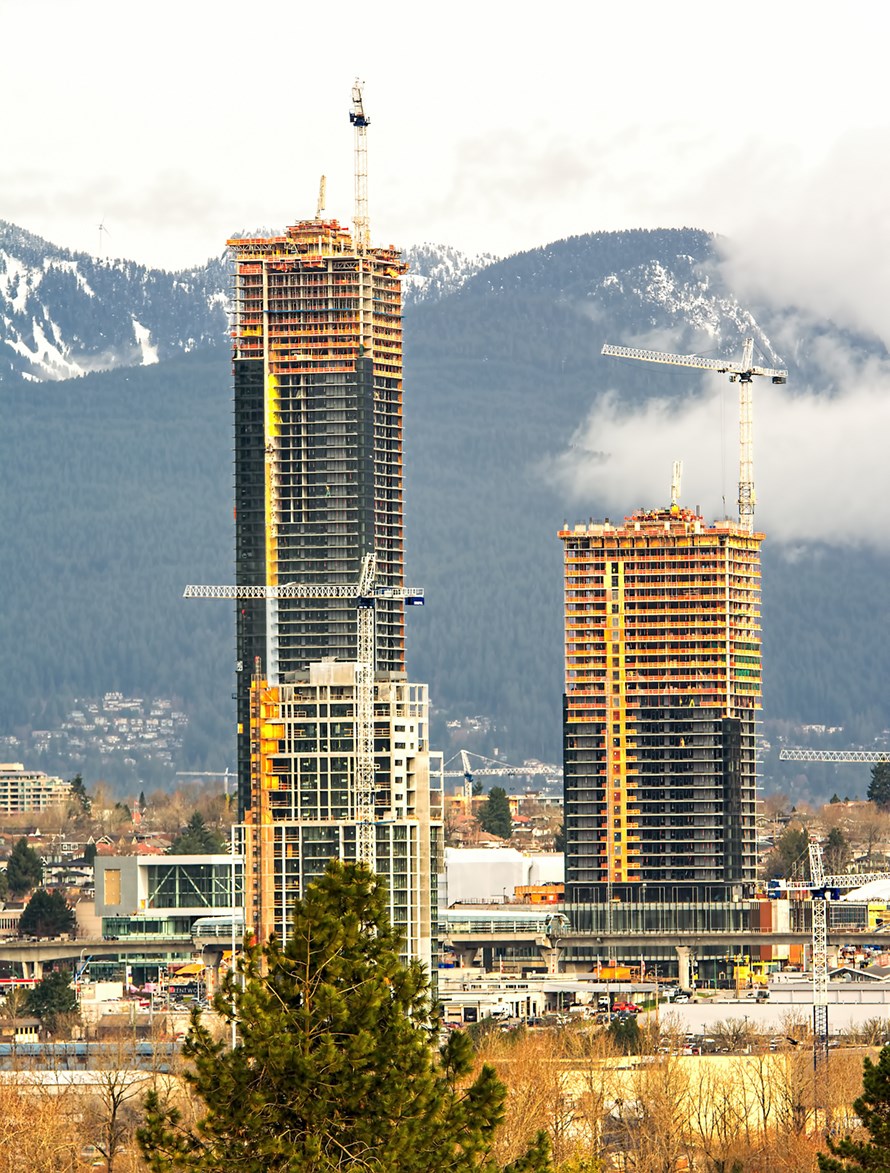Vancouver’s real estate market has always been driven by two groups: those who want to get in, and the insiders who want to make money. Sometimes the relationship between the two is symbiotic, and other times it’s one of codependency.
But these days, both groups are scrambling as affordability and profit become ever more elusive for both landowners and those looking to secure properties as owners or tenants.
“It’s the revenue that’s been propelling this forward,” David Wesik, executive vice-president with Wesgroup Properties LP, told the Vancouver Real Estate Forum in late April. “[But] everything’s gotten harder: the cost story, the approval timelines, carrying costs, available liquidity.”
There’s little relief in sight. The province’s latest inventory of major projects reports $75 billion worth of development on the go, with some of the biggest projects yet to start. These include $12 billion worth of infrastructure critical to the ongoing growth of the region: two rapid transit projects and two bridges.
Meanwhile, the people keep coming, upping the pressure on cities and developers to keep pace.
Metro Vancouver welcomes an average of 45,000 newcomers a year, and rising federal immigration targets won’t reduce that number. Moreover, the region faces severe land constraints on account of both geography – mountains, farmland and water – and planning policies that restrict urban sprawl in favour of compact development.
“Can Vancouver’s barriers to development be overcome? I think the simple answer is ‘No,’” said Darren Kwiatkowski, executive vice-president with Shape Properties Corp.
Kwiatkowski pointed out that Metro Vancouver planners want to house 68 per cent of the region’s next million people in one of the region’s 23 regional town centres and high-frequency transit nodes. Combined with demand job space at these same nodes, there’s incredible pressure on relatively small patches of land.
These town centres are, by definition, established hubs, which means that any new density is going to cause disruption, invite pushback from local residents and generally face longer approval times and greater holding costs.
“We actually picked a pretty terrible place to have up to three million [people],” quipped Wesik.
The saving grace for Wesgroup is diversification, which meshes with the broad needs of the region as growth continues, but also frees it from being dependent on quick successes in any one neighbourhood.
The approach supports Wesgroup’s plan to grow its income-producing portfolio of residential and commercial properties from 2.8 million square feet today to 8.5 million square feet by 2035.
“How we’ll be able to do that is through our land bank,” Wesik said. “It’s over eight million square feet of density.”
Wesgroup continues to build out the River District in south Vancouver, which will ultimately be home to 10,000 people and a mix of businesses, while in New Westminster it’s completing work on the Brewery District, a mixed-use redevelopment of the former Labatt Breweries site. Pacific Link Industrial Park in Surrey and 200th Street Business Park in Langley provide jobs space south of the Fraser within reach of key population centres and transportation networks.
Wesgroup plans a similarly diverse approach with future projects, including River Road North, a 370,000-square-foot industrial development in Delta, as well as 11 King Edward Avenue in Coquitlam and a three-phase industrial project at 3311 Mt. Lehman Road in Abbotsford.
“The key raw material needed to develop anything in this region is land, and we have a lot of it,” Wesik said.
Looking to the ALR
Other developers could benefit from a discussion on the future of the Agricultural Land Reserve, and whether food production is the best use for 20 per cent of the region’s land base.
Vancouver chief planner Gil Kelley said the real challenge for developers is overcoming opposition to infill development by showing that it can benefit communities.
Kelley said Vancouver is trying to deliver “community benefits in a more timely manner and a more direct manner into those neighbourhoods so that people are actually feeling it’s OK to have the impact [of development] because they’re having benefits out of it.”
Kelley said multi-family projects, particularly rental, are a civic priority for Vancouver, and that makes sense for Kwiatkowski. They’re the one variable that gives developers leeway to be price-takers, he said.
Shape is developing 253 rental units at Brentwood, and will launch another 250 at its Lougheed site.



